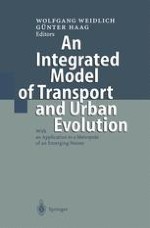Gone are the days when mobility was nearly always a question of having a vehicle. Today the issue of road capacity is becoming ever more pressing. Even the safest, most comfortable and 100% emissions-free vehicle is only of limited use if it is stuck in a traffic jam. Mobility is a key human need and an important factor in the economy. It is a matter of logic that a com pany like DaimlerChrysler should make every endeavor to safeguard mo bility, thereby fulfilling humanity's economic, social and environmental needs. Nonetheless, traffic and mobility problems are the inevitable result of a concentration of people and markets. Bombay, Lagos, Shanghai, Jakarta, Sao Paulo, Cairo, Mexico City - virtually half of the world's population is urban-based, and the majority live in the metropolitan regions of the Third World. The mega-cities in the so-called developing nations are facing a dramatic increase in traffic levels. Gridlock looms on the horizon. Should traffic-choked streets become a permanent and daily occurrence, economic development will be held in check and pollution will spiral.
